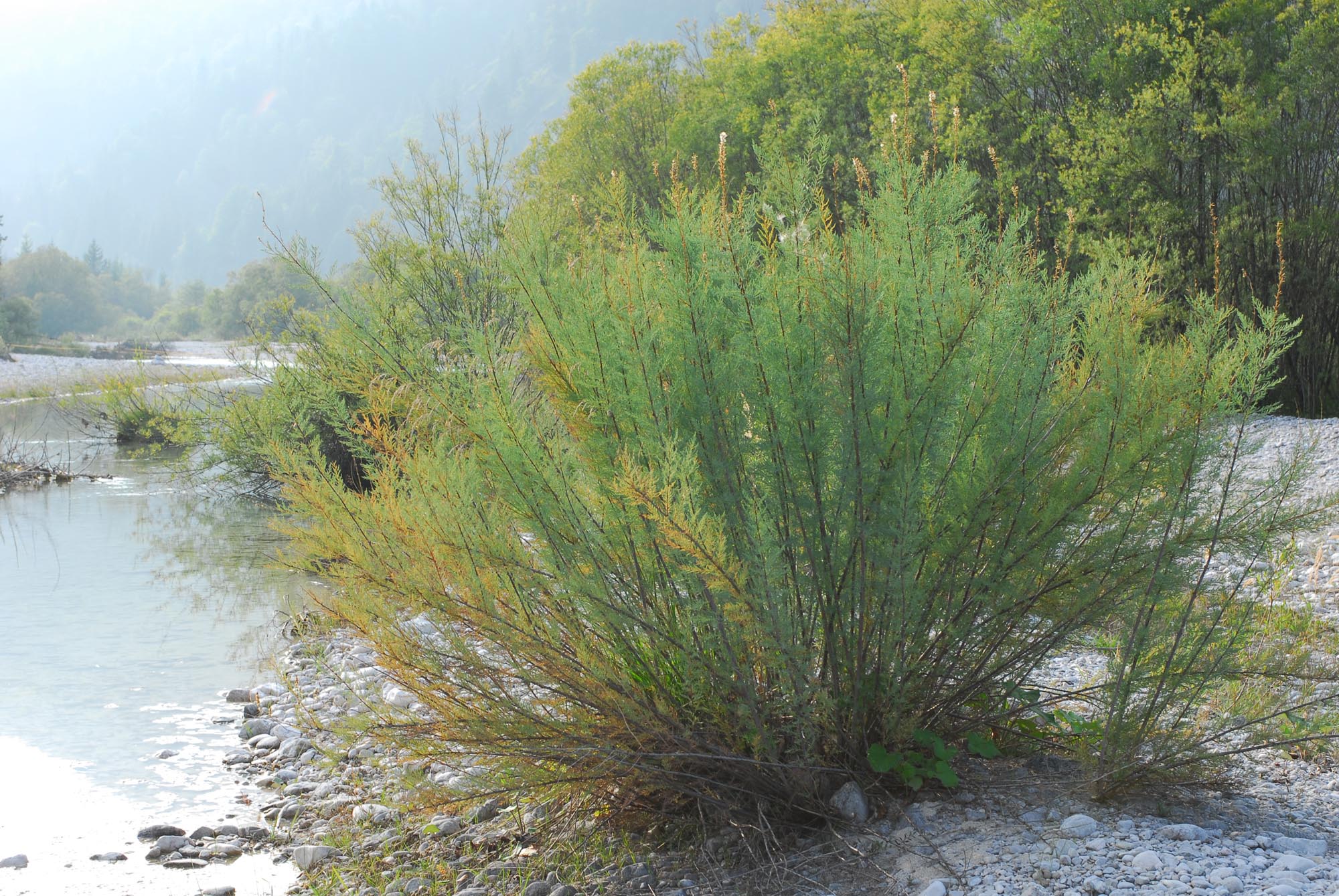
The German Tamarisk (Myricaria germanica) is a real survival specialist on the Tiroler Lech. It belongs to the tamarisk family and can grow up to 2 metres high. With its huge root system, it is firmly anchored in the gravelly soil.
Flooding is a problem for many other plants. The German tamarisk needs them to survive. If a flood passes over it, its elastic branches can bend under the flowing masses of water without suffering major damage. As a characteristic species of an alpine floodplain, the German tamarisk is dependent on regular rearrangement by flooding. These sites are poor in nutrients and characterised by high dryness at normal water levels. The German tamarisk loves light and sun. Without redistribution of the gravel areas, it is overgrown by alders and pines.
The German tamarisk used to be widespread along rivers, but today it has become a unique jewel. Regulation and reorganisation of the river system have destroyed its dynamic habitat on a large scale. Its natural habitats have become very rare. Together with shrub willows such as lavender or purple willow, it forms the willow-tamarisk scrub plant community.
In the northern Alps, the last large stands of German tamarisk can be found on the Tyrolean Lech, the Upper Isar and the Halblech.